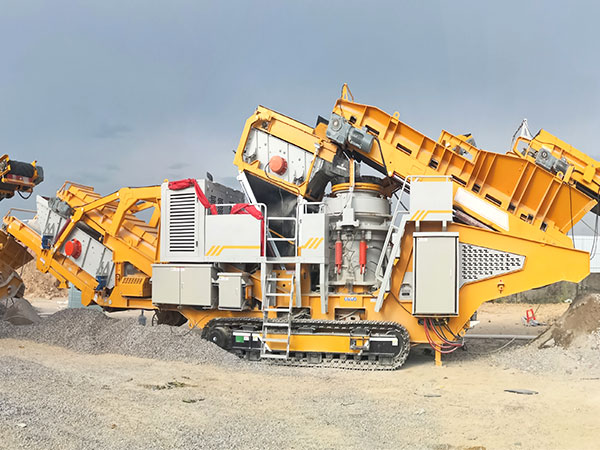Mobile crusher plants are versatile pieces of equipment used in various industries, including mining, construction, and recycling. One of the critical considerations when selecting a mobile crusher plant is its maximum capacity, which determines its productivity and efficiency. In this article, we explore the factors that can influence the maximum capacity of a mobile crusher plant.
Introduction to Mobile Crusher Plants
Mobile crusher plants are designed to crush and process various types of materials, ranging from hard rocks to recyclable materials like concrete and asphalt. These mobile crushing and screening plant consist of a primary crusher, secondary crusher (optional), and screening equipment, all mounted on a mobile chassis for easy transportation between job sites.Key Factors Influencing Maximum Capacity
1. Crusher Type and Size:
The type and size of the crusher significantly impact its maximum capacity. Different crusher types, such as jaw crushers, impact crushers, and cone crushers, have varying capacities and are suitable for different types of materials and crushing applications.2. Crusher Settings:
The settings of the crusher, including the closed side setting (CSS) and the eccentric throw, affect the crusher's capacity. Adjusting these settings allows operators to optimize the crusher's performance and maximize its throughput.3. Feed Size and Gradation:
The size and gradation of the feed material directly impact the crusher's capacity. Larger feed sizes require higher capacities to process efficiently, while properly graded feed material ensures uniform loading and prevents overloading of the crusher.4. Material Hardness and Abrasiveness:
The hardness and abrasiveness of the material being crushed affect the crusher's capacity and wear rates. Harder and more abrasive materials require higher crushing forces and may result in reduced capacity and increased wear on the crusher components.5. Crusher Design and Configuration:
The design and configuration of the crusher, including the chamber profile, rotor design (in the case of impact crushers), and crushing cavity geometry (in the case of cone crushers), influence the crusher's capacity and performance.6. Operational Factors:
Operational factors such as the crusher's operating speed, stroke, and frequency of maintenance can also affect its maximum capacity. Proper operation and maintenance practices are essential for optimizing crusher performance and ensuring maximum throughput.Optimizing Maximum Capacity
To optimize the maximum capacity of a mobile crusher plant, operators should:Select the appropriate crusher type and size based on the application and material characteristics. Adjust crusher settings to achieve the desired product size and maximize throughput. Ensure proper feed size and gradation to prevent overloading and optimize material flow. Choose wear-resistant materials for crusher components to minimize wear and prolong component lifespan. Implement efficient operational practices and regular maintenance schedules to ensure optimal crusher performance.

Comments
No comments yet. Be the first to react!